In the murky depths of World War I’s naval battlegrounds, a silent but deadly force emerged—the British E-class submarines. These underwater marvels redefined warfare, lurking beneath the waves to strike fear into enemy fleets. Let’s dive deep into their captivating story!

Below is our 1 meter long 3d printable model. Download a free version at the end of this article.
The Birth of the Stealth Warriors Picture a time when submarines were the stuff of science fiction, yet the Royal Navy dared to dream bigger. Enter the E-class submarines, born from a vision of stealth and precision. With sleek designs and cutting-edge technology, they were the navy’s hidden trump cards.
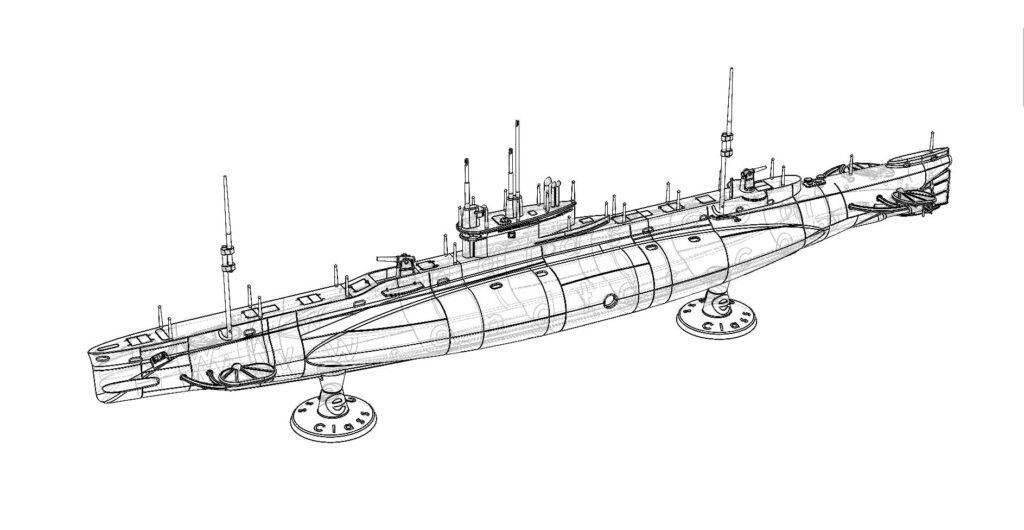
Please continue reading for more info, renderings of our 1meter long 3d printable model and download links.
If you want to directly proceed to our multi-part, highest-rez model pack, it’s HERE (opens in new tab).
You can click any image to see the full size version.
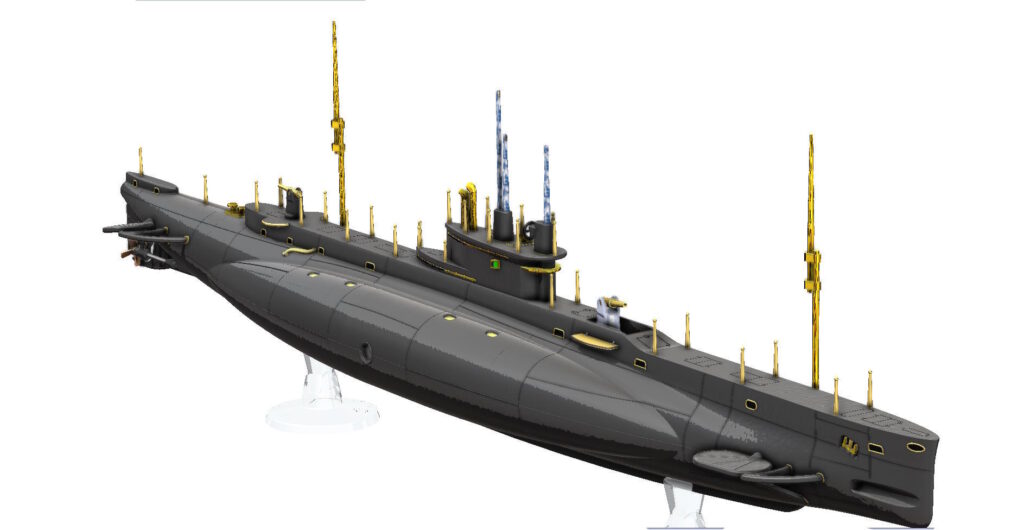
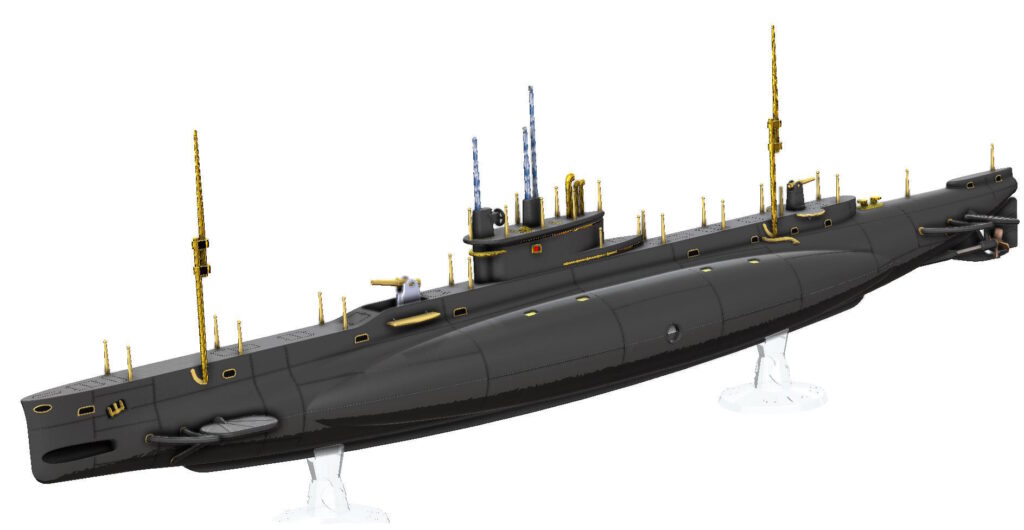
Underwater Titans: The E-class Design The E-class submarines weren’t your average subs; they were underwater titans brimming with innovation. Their advanced hull designs and powerful engines made them speed demons beneath the waves. Armed to the teeth with torpedoes and deck guns, they struck terror into enemy convoys.
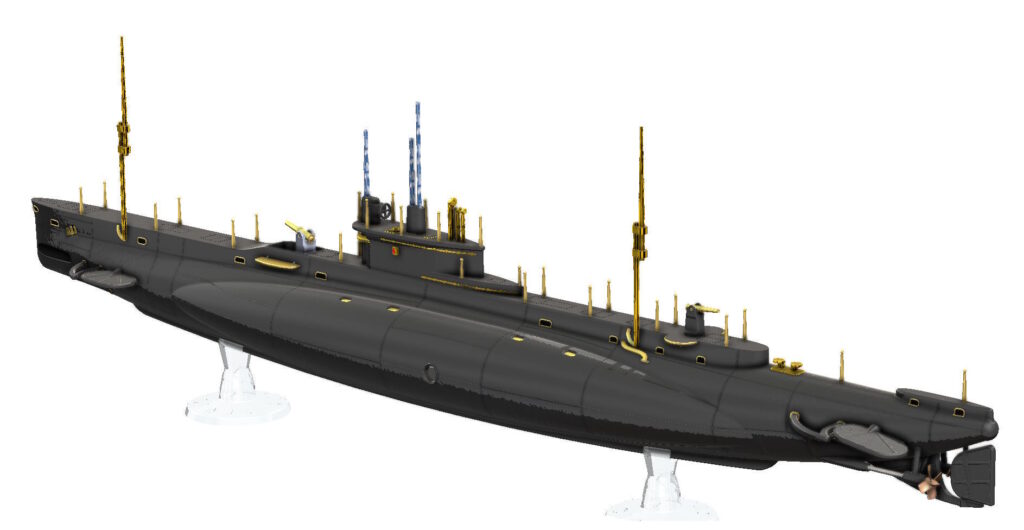
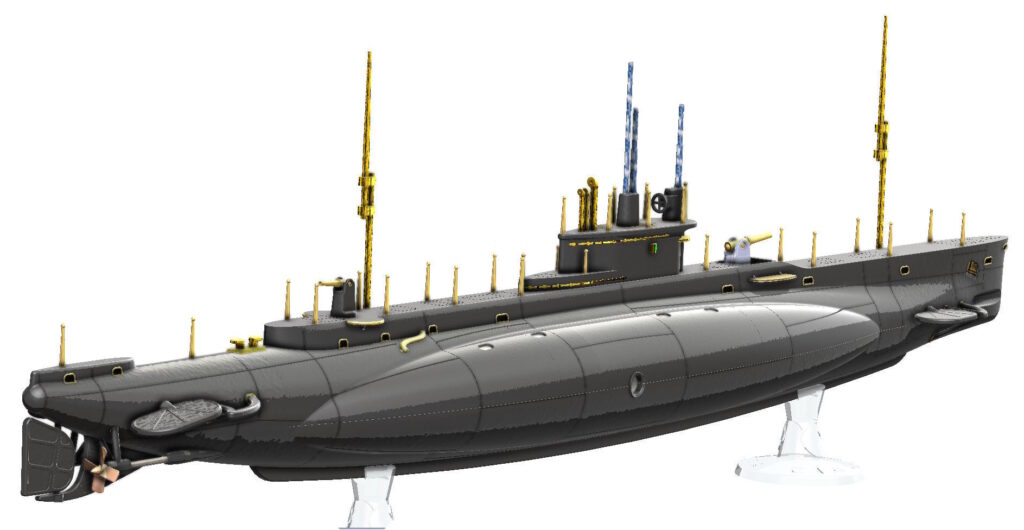
The Hunt Begins: E-class in Action As war raged on, the E-class submarines prowled the seas, ready to unleash havoc. From daring covert missions to intense sea battles, their escapades were straight out of a thriller novel. Imagine the tension as they stalked enemy ships, waiting for the perfect moment to strike!
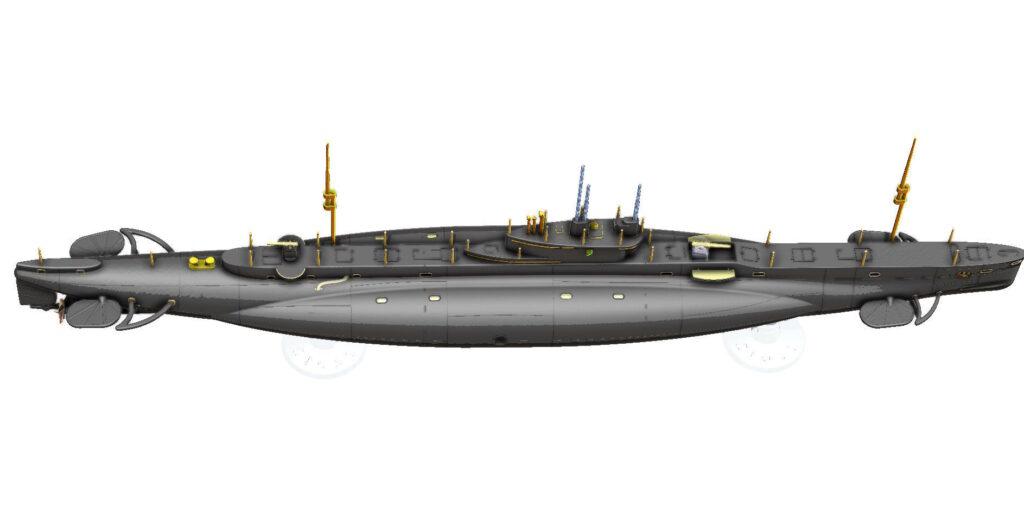
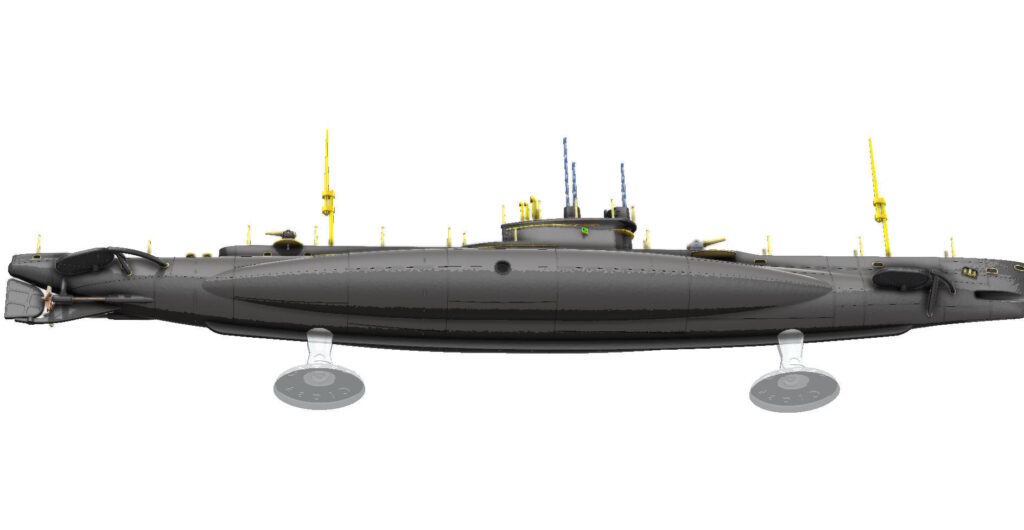
Heroes of the Deep: Legendary Engagements In the heat of battle, E-class submarines etched their names in history. Their daring raids on enemy fleets and strategic strikes turned the tide of naval warfare. Each engagement was a high-stakes gamble, where courage and cunning reigned supreme.
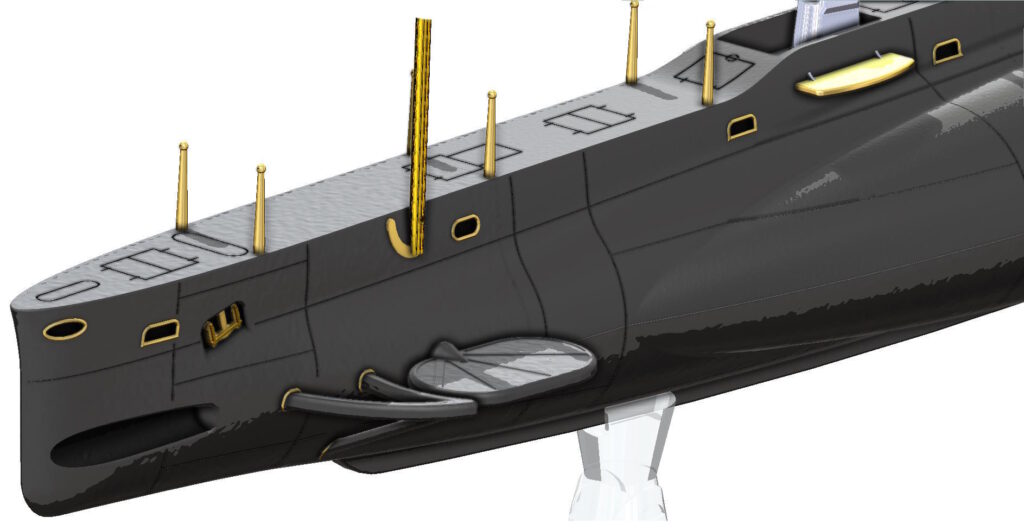
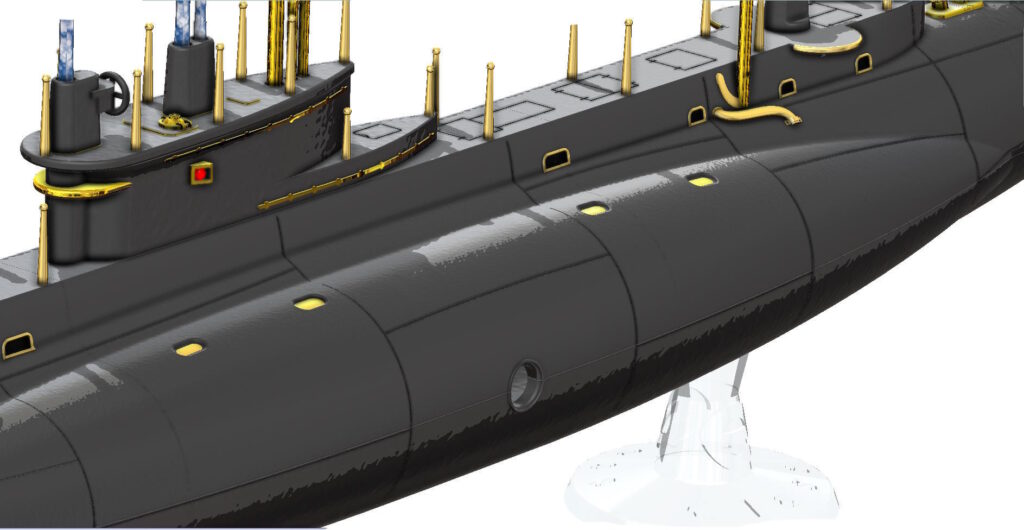
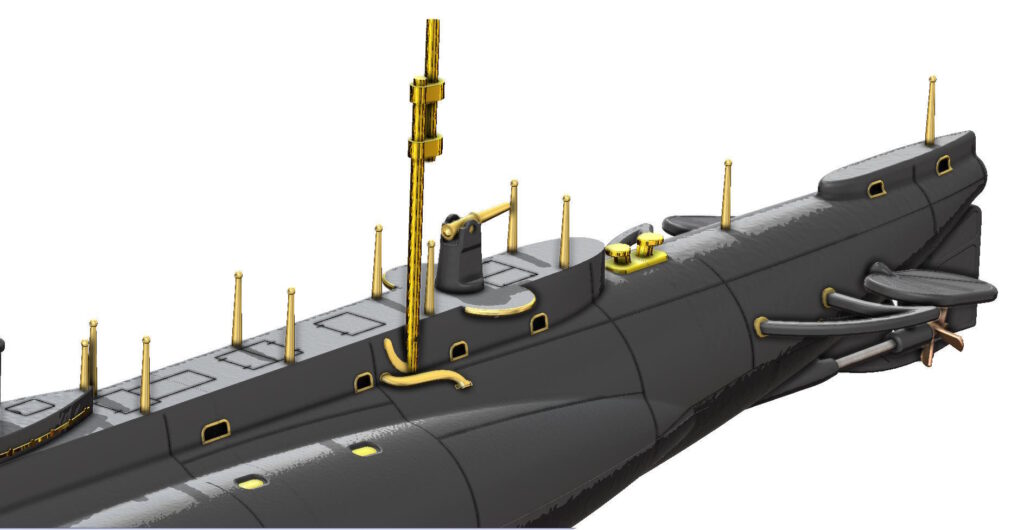
Innovations and Challenges: A Submarine Odyssey Life aboard an E-class submarine was a blend of innovation and challenges. From navigating treacherous waters to outsmarting enemy countermeasures, submariners faced it all. Yet, their indomitable spirit and technological prowess paved the way for future submarine warfare.
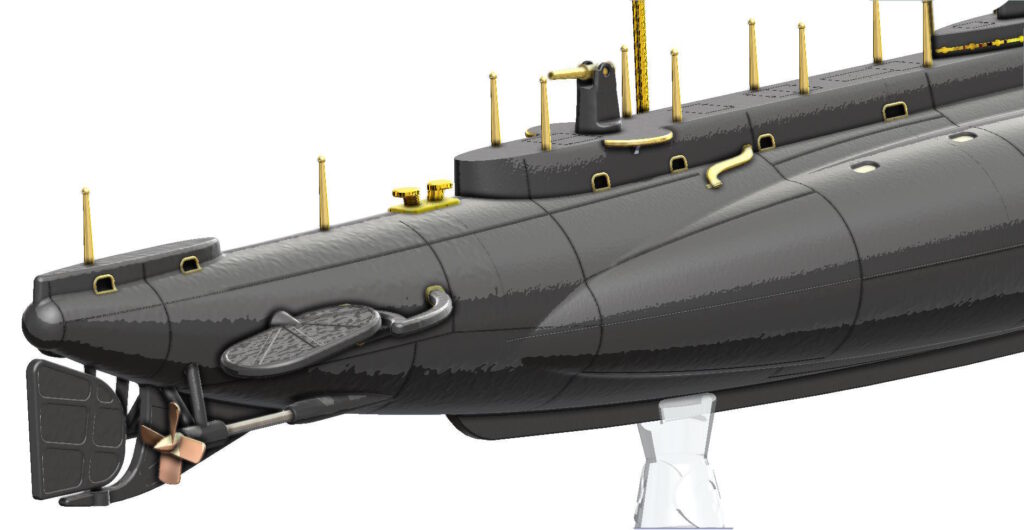
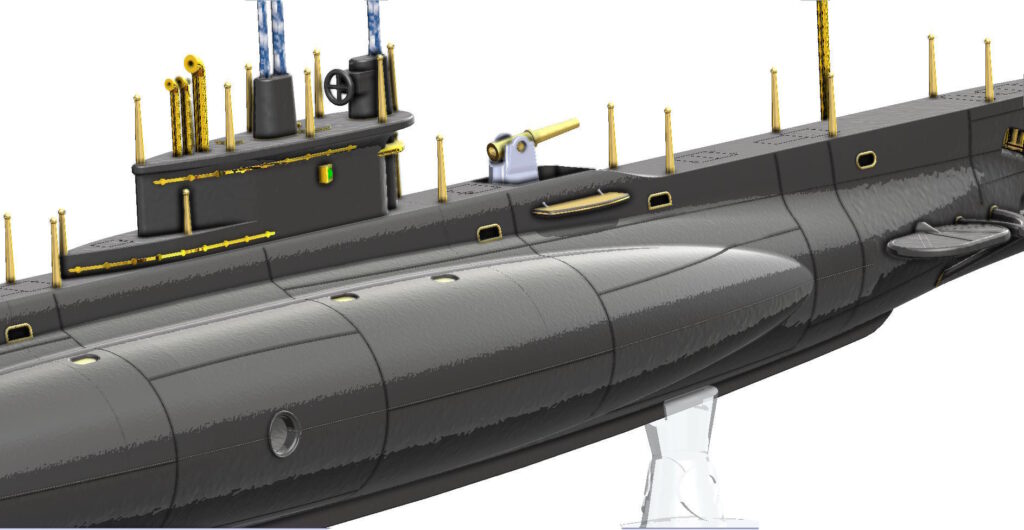
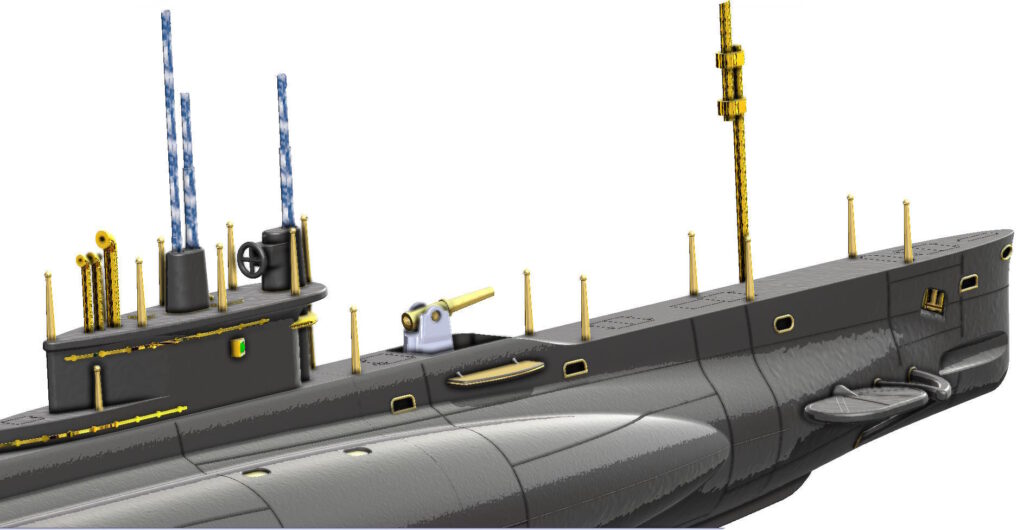
Legacy of the Silent Warriors As the echoes of war faded, the legacy of E-class submarines endured. They inspired generations of submariners and shaped the course of naval history. Today, their tales live on as testaments to bravery and ingenuity in the face of adversity.
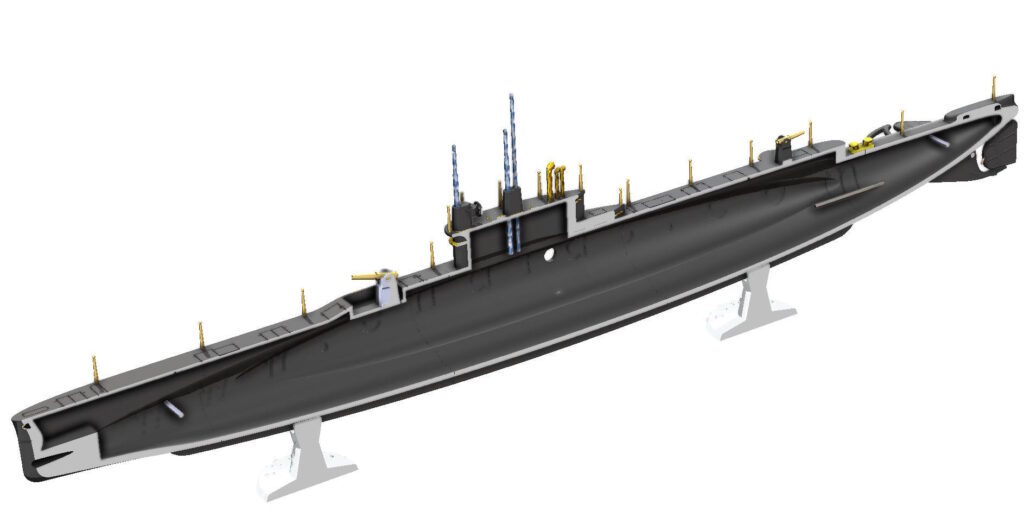
Salute to the Silent Hunters In the annals of naval lore, the British E-class submarines stand tall as silent hunters of the deep. Their thrilling exploits and remarkable feats continue to captivate imaginations. So, here’s a salute to these underwater warriors who changed the course of history beneath the waves!
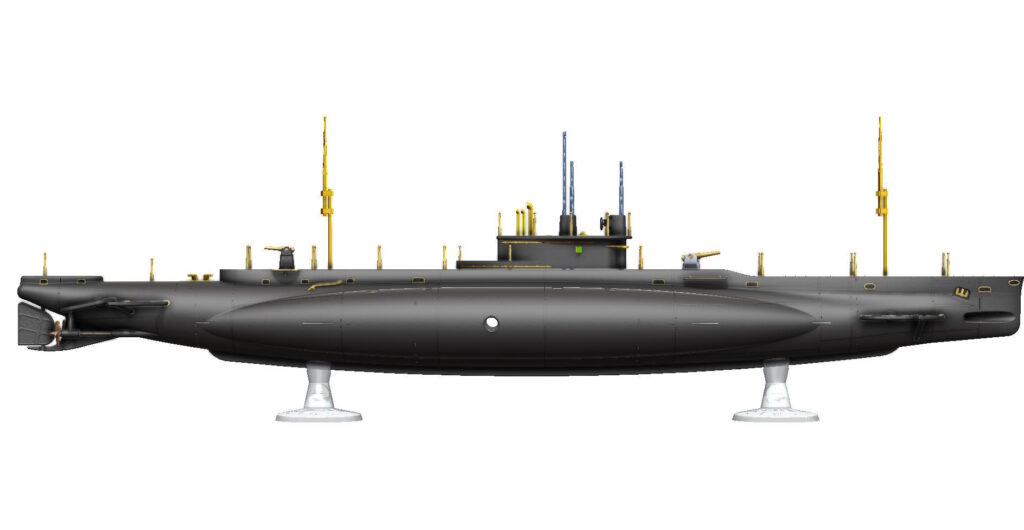
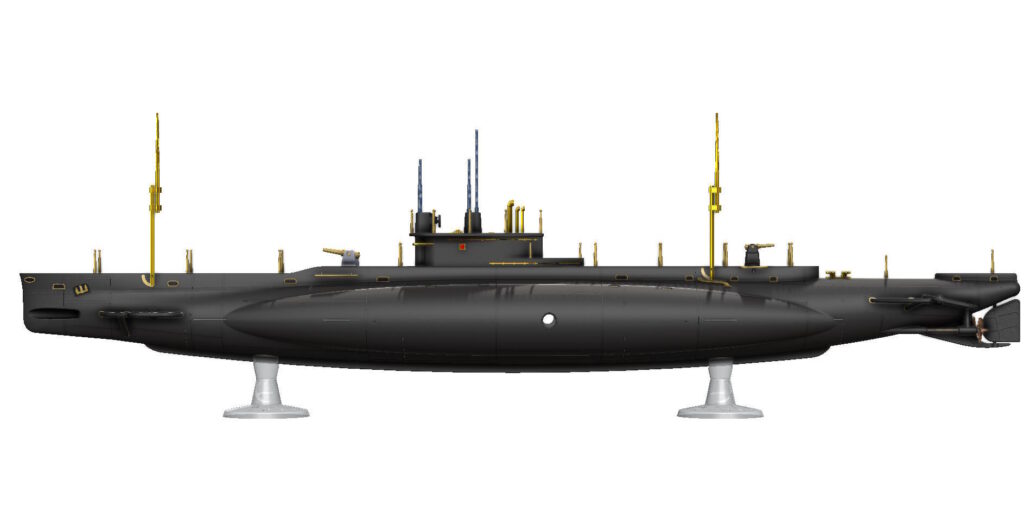
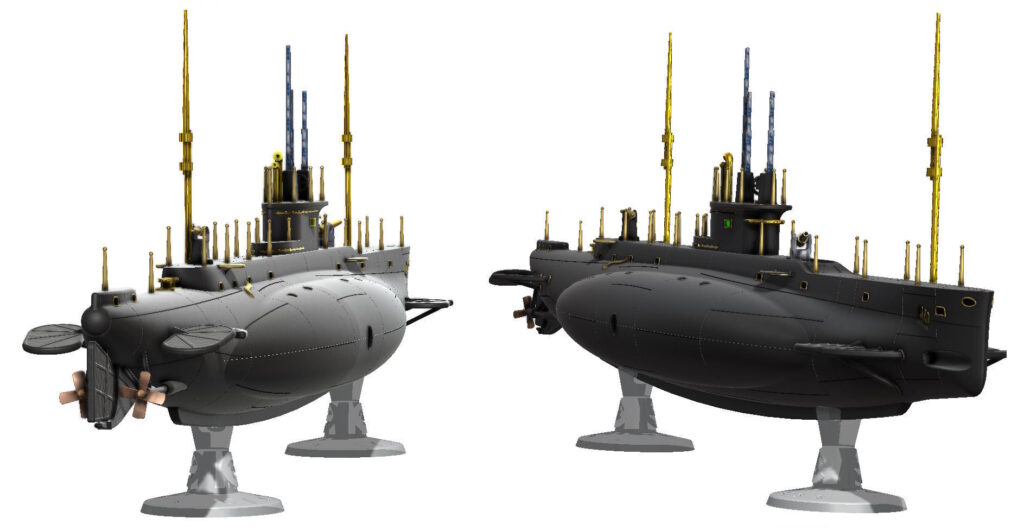
We also have a file pack, consisting of highest rez STL files (42 in total, 54Mb). You can get it FROM HERE. Download the free model below.
A 3D printed submarine can be converted into a remote-controlled model submarine. The process involves several steps:
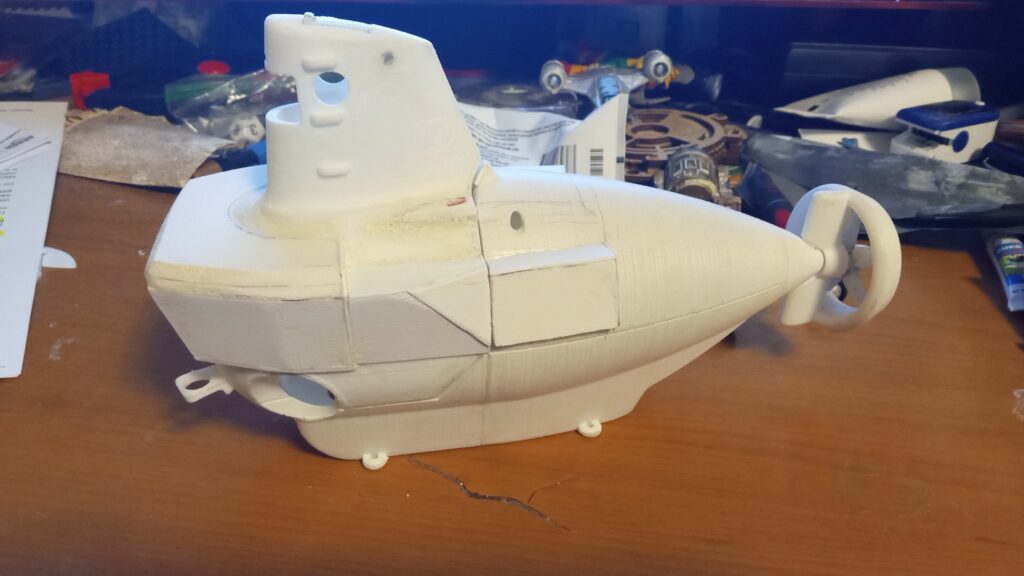
- Design and 3D Printing: First, the submarine model needs to be designed using 3D modeling software. This design includes all the necessary components such as the hull, propellers, control surfaces, and internal compartments. Once the design is finalized, it can be 3D printed using a suitable material like PLA or ABS.
- Electronics and Remote Control: The next step is to integrate electronic components for remote control. This includes installing a motor or motors for propulsion, servos for controlling the rudder and diving planes, and a receiver for receiving signals from the remote control.
- Power System: A power system, typically a battery pack, is needed to provide electricity to the motor(s), servos, and other electronic components.
- Assembly: Assemble the 3D printed parts along with the electronic components according to the design. Make sure all components are securely attached and properly aligned.
- Testing and Calibration: Before the submarine can be operated, it’s essential to test all systems and calibrate the remote control to ensure smooth operation. This includes testing propulsion, steering, diving, and resurfacing capabilities.
- Waterproofing: Since the submarine will operate in water, it’s crucial to waterproof all electronic components and sealing any openings in the hull to prevent water ingress.
- Operation: Once everything is set up and tested, the remote-controlled model submarine is ready for operation. Users can control its movements, including forward and backward propulsion, turning, diving, and resurfacing, using the remote control.
Overall, converting a 3D printed submarine into a remote-controlled model requires a combination of mechanical, electrical, and programming skills. It’s a rewarding project that allows enthusiasts to explore underwater robotics and remote control technology.
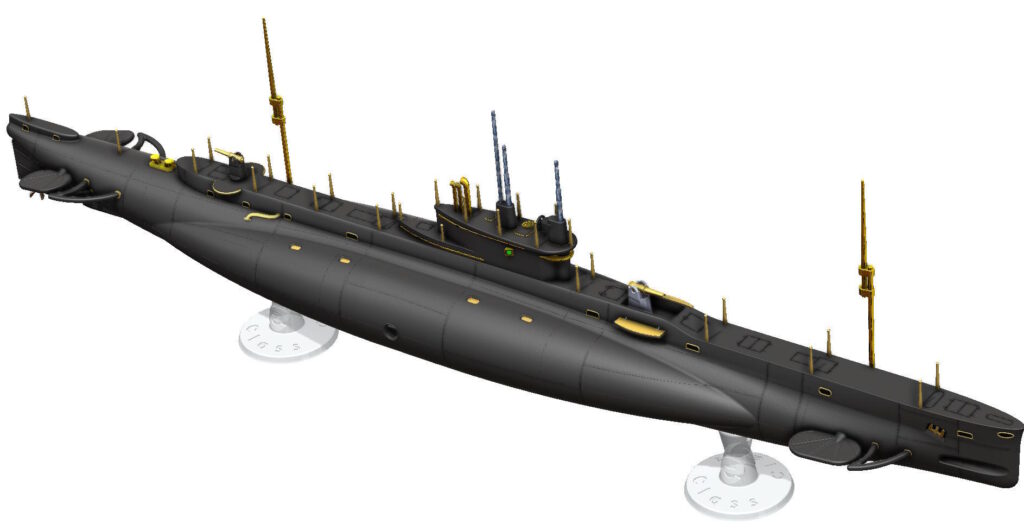
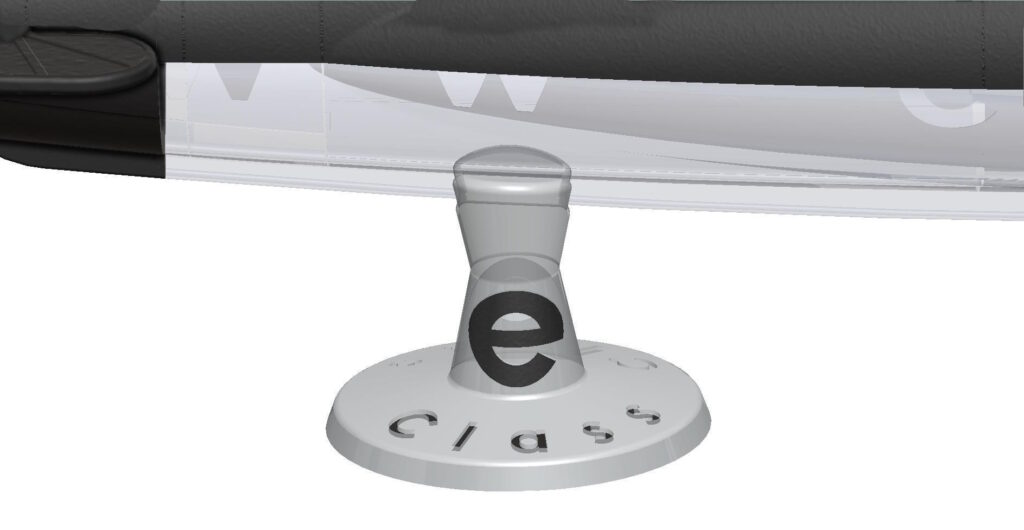





 Users Today : 18
Users Today : 18 Users Yesterday : 88
Users Yesterday : 88 Users Last 7 days : 558
Users Last 7 days : 558 Views Today : 37
Views Today : 37 Views Yesterday : 413
Views Yesterday : 413 Views Last 7 days : 2248
Views Last 7 days : 2248 Total views : 1288099
Total views : 1288099 Who's Online : 0
Who's Online : 0